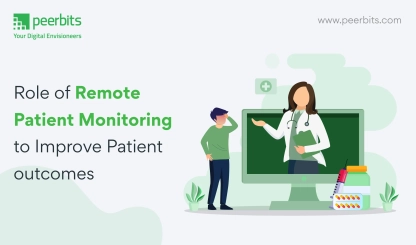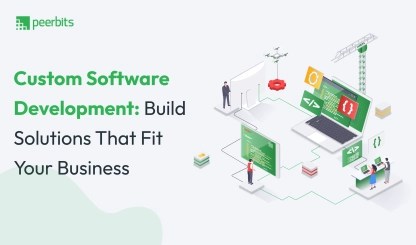You have probably noticed this before, but when you download most applications, they ask for permission to use your location. Depending on what the app is for, you may or may not allow it. It might be an app for fast food or it might be an app for grocery shopping coupons.
On the occasion that you do say “no” to the app using your location, you might also notice later on a notification pop up to advise you that the app could better serve you if your location services were turned on.
Location-based technology has opened up a world of possibilities for marketers. It greatly assists them as they aim to better target their target audience.
Using location-based technology, they can do things such as set the app to send you a notification when you come within a certain range of their store
You might not have had any intention of visiting that store, but once you see an offer you just can’t miss, you might change your mind.
A major advancement in technology that has given marketers, and others, the opportunity to do things like this are beacons:
What is a beacon?
Just think of a lighthouse…
It sits high up on a hill and sends out a signal for all the boats at sea to see. It is repeatedly transmitting that single signal for everyone to see to advise of how far they are from land.
Well, a beacon is very similar to this…
A beacon is a small Bluetooth radio transmitter. They are very small and simple devices which house a CPU, radio, and a few small, lithium chip batteries. Or, sometimes, they run via connected power such as a USB plug.
The device comes in various shapes and colors and might include temperature sensors, accelerometers, or other unique add-ons. However, all beacons have one thing in common – their job is to transmit a signal, just like the lighthouse.
But, instead of emitting visible light, it transmits a radio signal composed of a combination of numbers and letters. And, this combination is transmitted at regular intervals of approximately 1/10th of a second.
What is the importance of a beacon?
So, just why are these small, message transmitting, Bluetooth devices valuable?
Well, they basically help improve the effectiveness of a company’s app or message. They are primarily used as a form of marketing.
For example, my iPhone knows where my home address is. So, I might be out at the store grabbing groceries, get back out to my car, and the Maps app will pop up a notification that it will take me 5 minutes to get home and I can simply click the notification for directions…
I guess they just assume I have forgotten my way?
Anyhow, this then encourages me to use the app.
This same idea is referenced in the example at the beginning of this article–it is commonly used to trigger a coupon or some sort of actionable message when the shopper is close to that specific store or mall.
It goes something like this:
A shopping mall installs beacons in their shop and each beacon will have a certain ID that is registered in their designated app. So, thanks to this registration, a smartphone app can immediately recognize the importance of the incoming ID from the beacon.
A beacon device can’t communicate with a customer in the aisle unless the right app is installed on his device. Peerbits has a vast experience in developing beacon-based apps.
The smartphone then realizes that it is from that particular mall. But, other than that, the message has little meaning on its own… What happens next is entirely up to the IoT app development or other program used to recognize what it means.
So, how does it recognize what this code means?
The owner simply programs the app to read the code and trigger whatever action it deems – i.e. send a coupon. To break it down: Once the beacon simply connects to your exact location, the possibilities of what the program can do are endless.
For example, Microsoft’s SQL Beacon watches over your databases 24 hours a day. It monitors SQL Servers across an entire organization from a single instance – allowing DBAs to totally forget about best practice checks they often don’t have time to carry out.
How can beacons help asset tracking and management?
Beacon asset tracking is an advanced and productive way of tracking. It can help in multiple ways. Firstly you can use fixed location-based beacons for asset tracking.
They generate different ID and Bluetooth-enabled devices. Secondly, you can use a moving tracker that also produces BLE(Bluetooth low energy). Thus various devices will pick these signals.
The beacon asset tracking assists in hospital management. With the help of these, you can improve the use of medical devices and boost doctor performance by the definite location of the asset position.
Furthermore, you can also supervise the location of staff in real-time to minimize their time wastage.
It is also beneficial in manufacturing firms, you can boost the efficiency of workers by analyzing their movement. You can also focus on the movement of goods for best management.
With beacon asset tracking, you can easily handle all your assets and supervise your employee.
Industry statistics
It has become increasingly evident that beacons can be used in far more areas than just retail…
Specifically, beacons can be used to speed up the process of tracking and managing assets while also eliminating some of the common mistakes made during the process.
See table here for reference on applications of beacons.
Tracking and managing your assets is one of the most valuable aspects of your business. Not doing so can result in lost equipment and incorrect data – which could ultimately be pricey for you and your company.
However, beacons could effectively be the communication system between your equipment and your data tracking system. For example, you could easily cover a large warehouse with beacons to monitor how many finished products are sent out each day.
Next, comes the management part. Using beacons, you could monitor parts and materials during your manufacturing process which can help avoid bottlenecks and unnecessary delays in the production line.
Furthermore, beacon technology could even be used to assign a specific team member to a task based on their proximity to the location of the task at hand.
The global beacon market was valued at approximately 1.36 USD billion in 2018 and is estimated to reach 31.61 USD billion by the year 2026 at a CAGR of 48.9% during the predicted period.
The opportunities that can arise using this small Bluetooth technology could save money, streamline processes, and revolutionize the way assets are tracked and managed.
While retail has been the primary sector utilizing beacons, data shows that other industries are quickly hopping on board to relish in the benefits.
Conclusion
Beacon technology is helpful in engaging the audience and caters them relevant information on short notice. It can be used in multiple ways and in various industries.
Thus it is very much beneficial to boost engagement in office audiences or in making event management apps more reliable and convenient.








